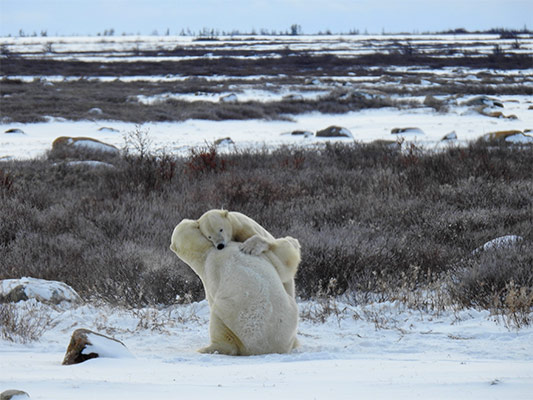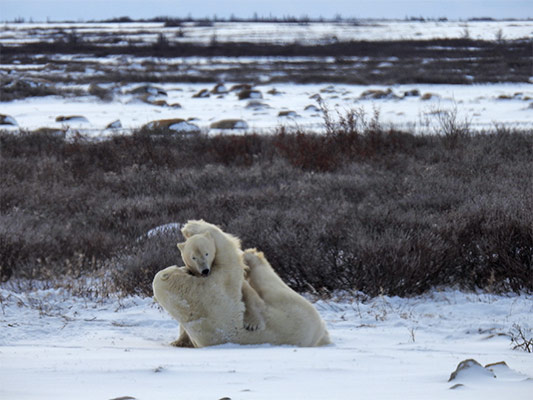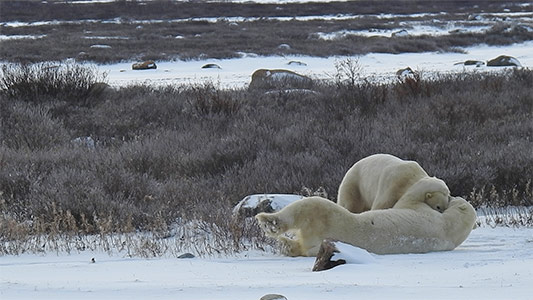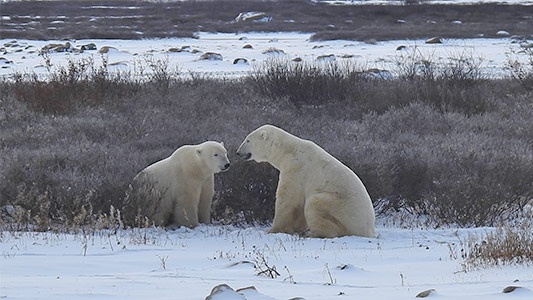In late fall, male Polar Bears often engage in ‘sparring’ – wrestling matches between two males that include some serious grappling but seldom result in injury. It is often suggested that this sparring is ‘practice’ for more serious encounters on the sea ice in April when female Polar Bears are sexually receptive and available to mate. Because female Polar Bears keep their young with them for almost 2 ½ years until they become independent, an individual female is only available to mate every 3 years if she raises her cubs successfully. Due to this heavily skewed sex ratio during the mating period (only 1/3 of females are available), receptive females are in short supply and males fight vigorously over access to females.




In addition, as in other bear species, there is almost certainly female choice in Polar Bears during mating based on a male’s physical stature. That is, females assess the size of a male during a wrestling bout where the male tries to overpower the female and females are willing to mate with only the largest, most powerful males. Presumably, large males will father large sons who will have increased mating success, ensuring that a female’s genes are passed on to later generations. Therefore, there is huge evolutionary pressure to become a large male and gain breeding opportunities. Interestingly, genetics studies have shown that the males most often detected as fathers in litters are between the ages of 11-17 when males reach their largest body size and before they start to decline in old age. So, apparently playful sparring between males in late fall serves an important evolutionary function as it may gain a breeding opportunity for a male the following spring.
Watch the video here.
Join us for another look at Polar Bears of Churchill
led by Dr. Marty Obbard, November 2 - 7, 2022. Learn more here.


